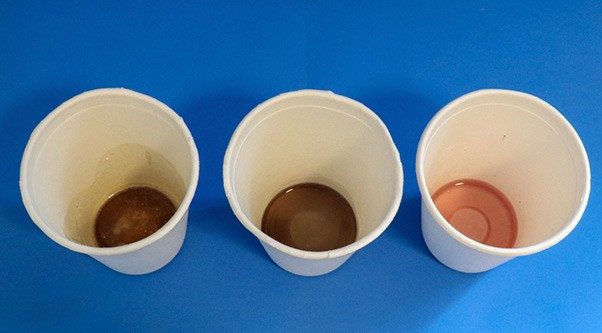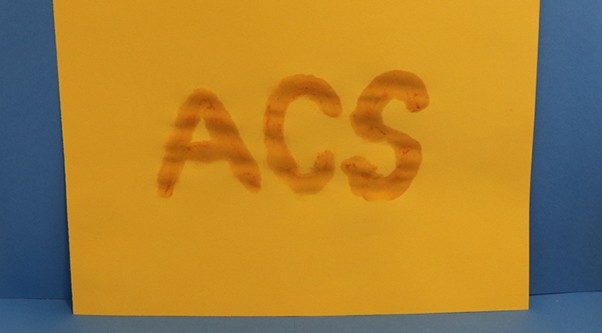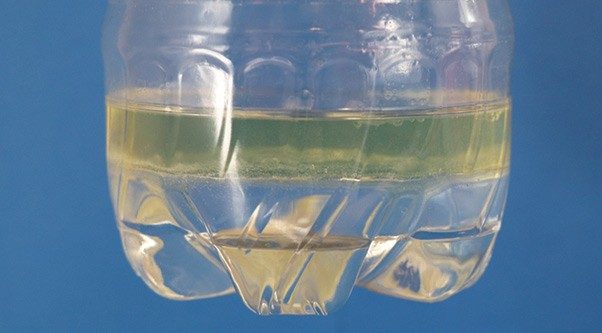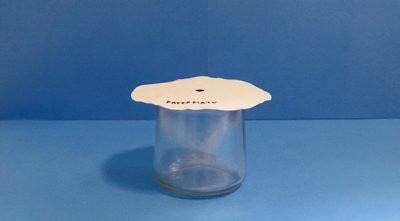
Question to investigate
Which colors are combined to make black ink?
Chemistry concepts
- Blank inks are usually mixtures of a variety of colored ink pigments in liquid solvents.
- Chromatography is a technique used to separate mixtures.
Activity logistics
- Ages: As written, this activity is suited for ages 5–12.
- Time: 30 minutes–1 hour
Be safe
- Safety goggles are required.
- Work with an adult.
- Read and follow all directions for the activity.
- Read all warning labels.
- Wear Personal Protective Equipment (PPE), such as goggles, safety glasses, or gloves.
- Tie back long hair, roll up sleeves, and secure loose clothing.
- Be sure to clean up and dispose of materials properly when you are finished with an activity.
- Wash your hands well before and after the activity.
Disposal: Dispose of all solid waste in the trash. The liquids can be safely disposed of down the drain with plenty of water.
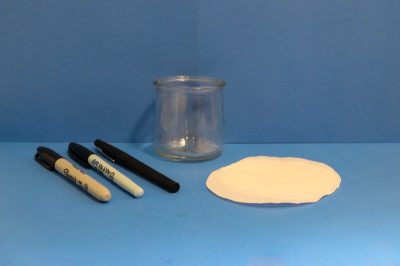
What you’ll need
- 3 different brands of black markers (include both “water-soluble” and “permanent” markers)
- 3 round, flat coffee filters
- 1 piece of scrap paper
- Jar, cup, or jar lid
- Water
- Dropper or straw*
* You can use a straw as a dropper. First, dip the straw into the liquid. Place a finger over the top of the straw to make a seal. When you remove the straw from the liquid, the liquid will remain inside the straw. When you are ready to release the liquid, remove your finger from the top of the straw.
Procedure
- Lay a flat coffee filter on top of a piece of paper on a flat surface. Choose one of the marking pens and color a solid circle in the center, about ½ inch (about 1 cm) across. With a pencil, label the filter paper with the brand of the marker you are using.
- Lay the coffee filter over the top of the jar.
- Drop water onto the center of your black dot. Use 5 to 10 drops, but do so slowly.
- Observe what happens when the first drop of water hits the black dot, and when you add more drops. What happens to the black dot and its color?
- Repeat with the other pens on the other coffee filters.
- Fill out the data table in the downloadable PDF with what you observed for each brand of marker.
What did you observe?
Download this worksheet to record your observations for each brand of marker.
How does it work?
Visible light—light that the human eye can see—is made up of the wavelengths of all the colors. You may have heard of these wavelengths shortened to ROYGBIV, which stands for red, orange, yellow, green, blue, indigo, and violet. A red object looks red because it reflects the red wavelength of light, and the same is true for all other colors. There is no such thing as “black light wavelength,” so why do black T-shirts, black crayons, and black marking pens look black?
Modern black inks in marking pens are usually mixtures of a variety of colored pigments mixed with different liquids. In this experiment, the water moves across the paper by a force called capillary action. The water carries some parts of the ink components further than others, and the colors separate out into a range of colors. Different brands use different combinations of ink to produce their black markers, so each brand separates into its own color pattern. This chemical process is called paper chromatography.
Chemists use the process of chromatography to separate and analyze the different parts of a mixture. Different methods of chromatography use different materials (besides paper) to separate mixtures. Scientists can make chromatograms of fall leaves to show how the different leaf pigments that give plants their color break down in cooler weather. Chromatography can also be used by law enforcement in crime scene investigations, by art experts to determine original paint pigments in restoration projects, and even when analyzing food.
Some of the brands you used may not have separated into colors at all. Certain “permanent” inks use colored inks dissolved in a different solvent, like an alcohol. You can repeat this experiment with isopropyl alcohol (rubbing alcohol) to see if the inks separate.
So, is black a color? Each of the colored components in a black ink absorbs a portion of the visible light spectrum wavelengths. If all the visible light has been absorbed by the components in an ink mixture or in any other object, no light bounces off the object and hits our eyes. In this case, we see no color and we describe the object as being black. Scientists have developed a material called Vantablack that absorbs 99.965% of visible light. Vantablack is considered the blackest black in existence!
This activity is adapted from an activity that originally appeared in the Celebrating Chemistry issue for National Chemistry Week 2015.

